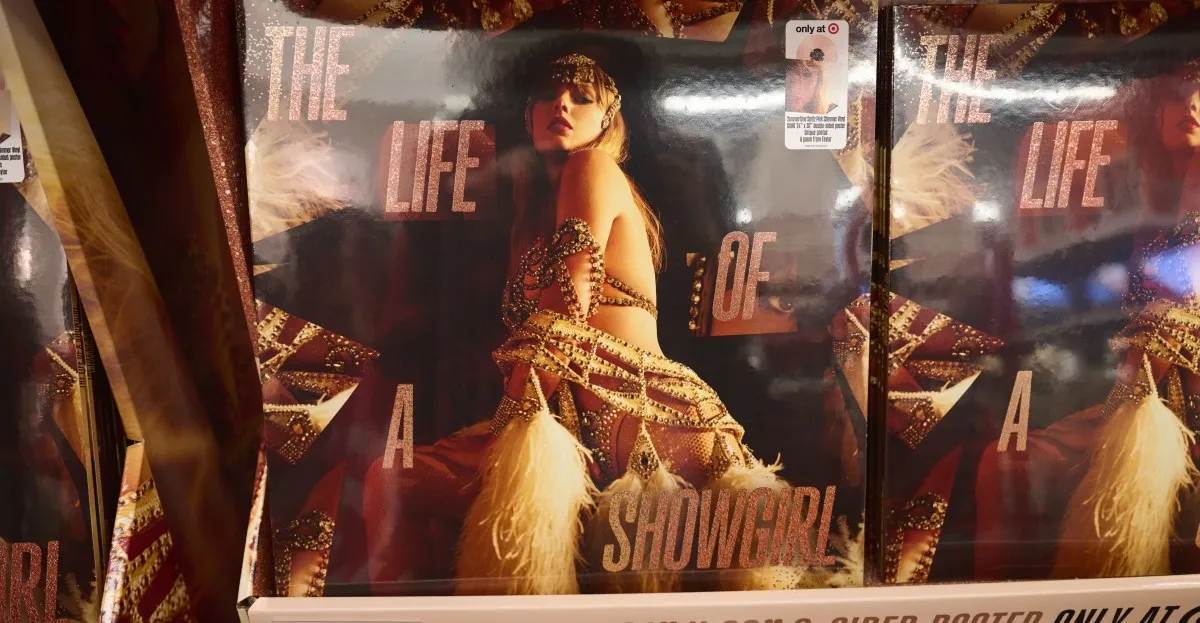
Even with 38 ways to buy it, Taylor Swift’s new album, The Life of a Showgirl, has not resonated well with many fans. Released earlier this month, the album's unveiling was met with skepticism. Swift’s extensive array of products—from the “Shiny Bug Vinyl Collection” to the exclusive “Showgirl Cardigan Boxed Set”—left some listeners feeling overwhelmed and unwilling to spend more on her music.
Upon its release, the 12-track record received a wide range of reviews, creating a divide even among her most dedicated fans. Some critics went so far as to label it “cringey” and “disappointing,” suggesting that Swift’s music has “never been less compelling.” In response to the criticism, Swift stated, “I have a lot of respect for people’s subjective opinions on art. I’m not the art police.” This comment opens the door for a deeper discussion about the public's perception of her work.
Ann Powers, a music critic at NPR, suggests this backlash is part of an intentional strategy by Swift. According to Powers, at the peak of her career, Swift may be embracing a “villain” persona. In a recent conversation, she discussed Swift’s showgirl mentality and the hyper-personal nature of her lyrics, suggesting that this might ultimately strengthen her position in the industry despite the negative reaction to the album.
Since the release of The Life of a Showgirl, the intensity of the backlash has noticeably escalated compared to her previous albums. Critics and fans alike are now responding to Swift in ways that differ significantly from their reactions during her Eras Tour. Powers likens Swift’s journey to clinging to a giant pendulum, oscillating between adoration and criticism—a phenomenon that often accompanies artists of her stature.
The variety of products associated with this album, such as exclusive vinyls and themed merchandise, may have fueled the backlash. One notable example is the “Crowd Is Your King” vinyl available at Target, alongside a controversial hairbrush that falls apart. Initial responses to the album were lukewarm, with many fans expressing dissatisfaction almost immediately after its debut.
Interestingly, the backlash appears to have been exacerbated by the leak of lyrics from a track titled “Actually Romantic,” rumored to target fellow pop star Charli XCX. This timing seemed to negatively influence the album's reception, leading to a wave of criticism that questioned Swift's wealth and social status, particularly in light of her portrayal as the “underdog” in her music.
In limited interviews following the album’s release, Swift maintained a nonchalant stance, stating, “I’m not the art police. I am okay with how anyone responds to this album.” This approach has resonated with many, but it hasn’t shielded her from the growing discontent, even among her most passionate fans.
The ongoing dialogue around whether true artistry can emerge from a place of wealth and happiness has sparked debate. Critics often compare Swift’s approach to that of Beyoncé, who has successfully intertwined her personal narrative with broader social issues, thus elevating her music beyond her individual experiences. This contrast raises questions about Swift’s artistic evolution and whether she can transcend her autobiographical roots to create universally relatable art.
While some critics argue that Swift's music lacks growth, Powers suggests this expectation is misplaced. She emphasizes that producing pop music should not be viewed as a continuous journey of self-improvement. Additionally, Powers asserts that there is no issue with an artist writing about their experiences throughout their life, regardless of their status.
Powers theorizes that Swift created this album not out of a desire for financial gain—given her immense wealth—but rather to assert control over her public narrative. With a newfound sense of happiness, Swift may have aimed to mark her journey and convey her empowerment through this music. Acknowledging this perspective, Powers concludes that while Swift’s current phase may invite scrutiny, it also serves as a significant point in her artistic trajectory.